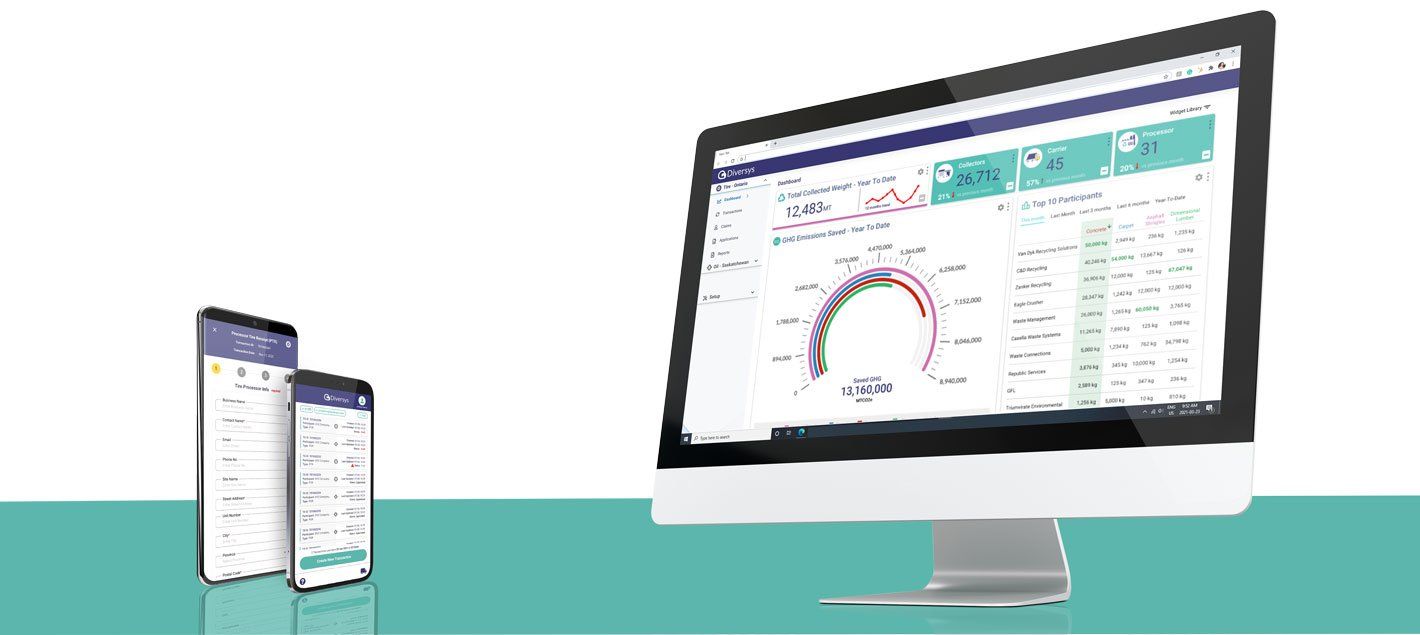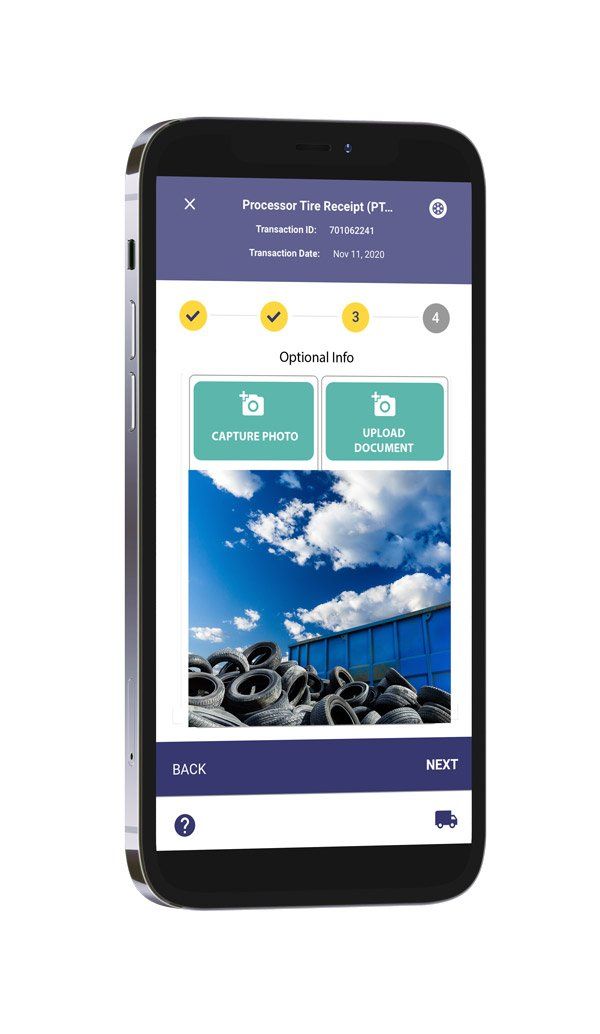MYTH 4: “I have everything I need.”
“Between paper forms, my data management tool, CRM, ERP, and finance software, I have all the tools I need to measure and track my ESG strategy.”
This is the fourth installment of our eight-part myth-busting series. In this series, we explore some common myths in the recycling and waste management industry, explain how these myths came about and why they persist, and share some revolutionary insights that help program managers see things in a better way.

Demands for Environmental, Social, and Governance (ESG) integration in business operations has increased substantially over the last few years.
Just last year, an estimated $120 billion was poured into sustainable investments, doubling from the previous year. And it only continues to grow.
While these investments and the public interest they garner are long overdue, they come with some concerns: namely, there’s now more pressure than ever on organizations to devise robust, data-driven ESG strategies – ones that demonstrably move us towards our circular economy goals.
Whether the goal is greenhouse gas (GHG) emission reduction, a certain tonnage of landfill diversion, or better and more detailed reporting that proves we’re headed in the right direction, the spotlight comes with added pressure.
This of course affects big and small recycling operations alike – everyone’s trying to figure how best to accurately measure, track, and report on their recycling efforts.
It's really no wonder we’ve seen an influx of tools being adopted by organizations to help, directly and indirectly, with these efforts. Not only are people turning to software tools to help their daily operations run more smoothly, they’re hoping that these solutions will also drive them more efficiently towards their long-term performance goals.
But are these tools really helping?
Let’s take a look at some of these solutions in detail and examine how well-equipped they are to drive us to a world without waste.
Tools for Your ESG Initiatives
As part of their ESG strategy, most organizations in recycling and waste management are using at least some software tools. These may include:
A data management tool, such as Excel or Google Sheets
- Generally, organizations that use paper forms manually enter the data from the forms into this software. From here, they can create graphs and charts to “visualize” their data. Many organizations stretch these programs to function as performance tracking or program management tools, which is ineffective – these tools aren’t intended to be used this way and don’t do what is needed.
A customer relationship management (CRM) tool, such as Salesforce, NetSuite, or Zoho
- Though there are lots of uses, these are generally used in the industry to manage relations with participants (e.g., haulers, processers, collectors, generators, etc.).
An enterprise resource planning (ERP) tool, such as SAP or Microsoft Dynamics NAV
- Generally, these are used for inventory management.
Some sort of financial tool, like an accounting software such as QuickBooks
- These are used to help with things like payments to participants and budgeting.
Most organizations are relying on more than one of these to operate efficiently, as each one takes care of a separate area of concern. By using some or all, especially in addition to paper forms, recycling and waste management organizations hope to create meaningful reports for their stakeholders, smoothly manage their participant relations, stay within budget, and hit their performance goals or recovery targets for the month, quarter, or year.
However, the questions to ask are:
How good are these tools at giving you a full picture of your operations? Are there blind-spots? And where, in all these different solutions, are the checks and balances to make sure that the progress you think you’re making towards your goals is accurate and provable?
In one way, it’s fair to assume that, with so many tools to cover so many different facets of an organization’s recycling operations, there wouldn’t be any gaps or anything missing.
After all, if I've invested in all of these different tools, they should be enough to ensure my operations are running smoothly and that I'm reaching my ESG goals – shouldn’t they?
Unfortunately, this false belief is precisely why this myth persists.
A Cobbled Together Solution?
Before we talk a bit about the one key thing all of these solutions don’t give you, let’s talk about how well these solutions interact with one another. This is crucial if you want a full picture of your recycling operation and to know for sure how well you’re progressing in your ESG strategy.
If your organization uses multiple tools to manage your waste or recycling program, do your software platforms talk directly to one another?
For instance, if you enter information from a paper form into Excel about the amount of waste or recycling materials that were picked up on a certain day by a certain participant, can you also see that information shared in your CRM? Is it available on both platforms in real-time, right away?
From there, is it easy to look at trends from your data? To go back to the example above, can you see all of the pickups that participant has done historically? Can you parse that information to create meaningful analysis?
And if your multiple tools don’t integrate directly with one another, how do you decide which one has the most accurate information? Which can you trust the most when they don’t reconcile?
Or have your business practices been siloed by multiple tools?
siloed
/ˈsʌɪləʊd/
adjective
-(of a system, process, department, etc.) isolated from others.
These are some important questions to consider when you examine your own operations. There’s nothing wrong with multiple tools – in fact, using many different platforms it’s the reality for all businesses – but it’s always good to remember to return to your ultimate goal and see if these tools help (or even hinder) your progress towards it.
So, ultimately the question is: how well are these tools giving you a full, accurate, traceable, and provable picture of your operation’s performance?

The Gap In Your Solutions
At the end of the day, these tools do an excellent job of showing you pieces of your operations.
But they simply don’t give you a full picture of your performance.
Each one tells a different story, and sometimes the stories don’t add up.
Another issue is, these solutions don’t give you the checks and balances necessary to make sure your performance is on target.
They can generally keep things running in your daily operations.
But they can’t visually show you your progress towards your goals – and they definitely can’t make sure that progress measurement is based on 100% reliable data.
So, these tools help you in your daily operations. But they don’t help you make sure you’re on track to meet your performance goals or recovery targets.
This means they cannot be the only part of your ESG strategy.

Taking a Step Back
But this is just the beginning of the problem.
To understand what is needed to fix it, we need to take a step back and ask: what is really needed for you to make sure you’re meeting your targets and goals?
It’s simple:
At the end of the day, for any recycling program to be successful, it needs to have a foundation of high-quality, irrefutable data.
That means the data coming in from the field needs to be solid and 100% accurate. And this means that the security, fraud and error safeguards need to be embedded in your processes right from the beginning, right as data is being captured. Adding these safeguards at any other point (say, when data is being manually entered into Excel) is simply too late.
“The field” = This is what we call it when a participant (e.g., hauler, collector, generator, etc.) is performing a waste or recycling activity, such as a pickup or dropoff. If these activities are captured and tracked on a paper form, there’s no safeguards against error or fraud. And this information needs to be 100% accurate, because it feeds into the recycling or waste organization’s performance tracking.
But this is just the beginning of the problem.
To understand what is needed to fix it, we need to take a step back and ask: what is really needed for you to make sure you’re meeting your targets and goals?
It’s simple:
At the end of the day, for any recycling program to be successful, it needs to have a foundation of high-quality, irrefutable data.

These errors sound ridiculous – and yet there is no current way of knowing how often they happen in a recycling or waste program. If they are caught, it can take weeks, sometimes months, to go back and find where the error started from. At this point, payments may have already gone through and reporting periods or auditing may have already occurred.
What’s more, the organization might be way off about the progress they think they’re making towards their goals.
This is a very real problem that’s keeping many in the industry up at night. There a huge sign of data resistance, as well.
So what’s the solution?
Stop Relying on Paper
The solution is to build a process that makes sure accurate information is captured right from the beginning.
This means that if you’re using paper forms to capture data, you need to switch to a digital solution that can detect and protect against fraud, errors, or security breaches.
This solution might ask participants to enter information into an app (rather than a paper form) that can automatically detect if the information entered is “off” - for instance, if quantities and weights entered don’t match up. It may use features such as geotagging to ensure that the pickup or dropoff location being entered is accurate. (This is especially important for organizations that work in geographic constrictions or pay incentives to participants based on location.)
These are just a few simple examples, but these features go a long way to ensuring information in your program is accurate.
This helps with the overall management of your program, especially of the solution can show you performance metrics or visualize your data so you can easily track how you’re doing against your KPIs.
With accurate information from the get-go, that performance tracking actually is reliable, so you can make business decisions based on it and report confidently to stakeholders, legislators, or auditors.
What About My Other Tools?
A good program management software may have some overlap with your other software tools. For instance, it may have a way to manage participants, track inventory, or create invoices.
So, when it comes to multiple tools, integration is key.
You need a program management tool that directly talks to your CRM, ERP, or financial tool. So the same information that’s entered in the former will show up in the latter. And vice versa.
That way, your program management tool can complement the software tools your team is comfortable using, by ensuring the results are accurate, traceable, reliable.

At the end of the day, your program management software should unite instead of silo your business processes and give you the same, accurate information across software platforms and departments in real time.
That way, you can reliably say that your ESG strategy is effective.

About Diversys
Diversys is proud to have its roots in Ontario, Canada - a province widely recognized for its leadership in EPR and sustainability. Since 2019, we've been dedicated to creating innovative software solutions that drive progress toward a world without waste.
Our story is a testament to the power of hard work, customer loyalty, and big ideas. We are committed to empowering organizations with the waste recycling software solutions necessary for achieving a sustainable future. Our cutting-edge software platform is helping organizations achieve their ESG goals, meet reporting obligations, and improve operational efficiency for their recycling programs.
Our commitment to delivering world-class solutions that drive meaningful progress towards waste reduction and a more sustainable future is unwavering. Our team of industry experts is ready to help you navigate the rapidly-evolving waste management landscape as we progress toward a circular economy.
Knowledge Center




Knowledge Center




Knowledge Center


Subscribe to get updates.
DIVERSYS
LINKS

